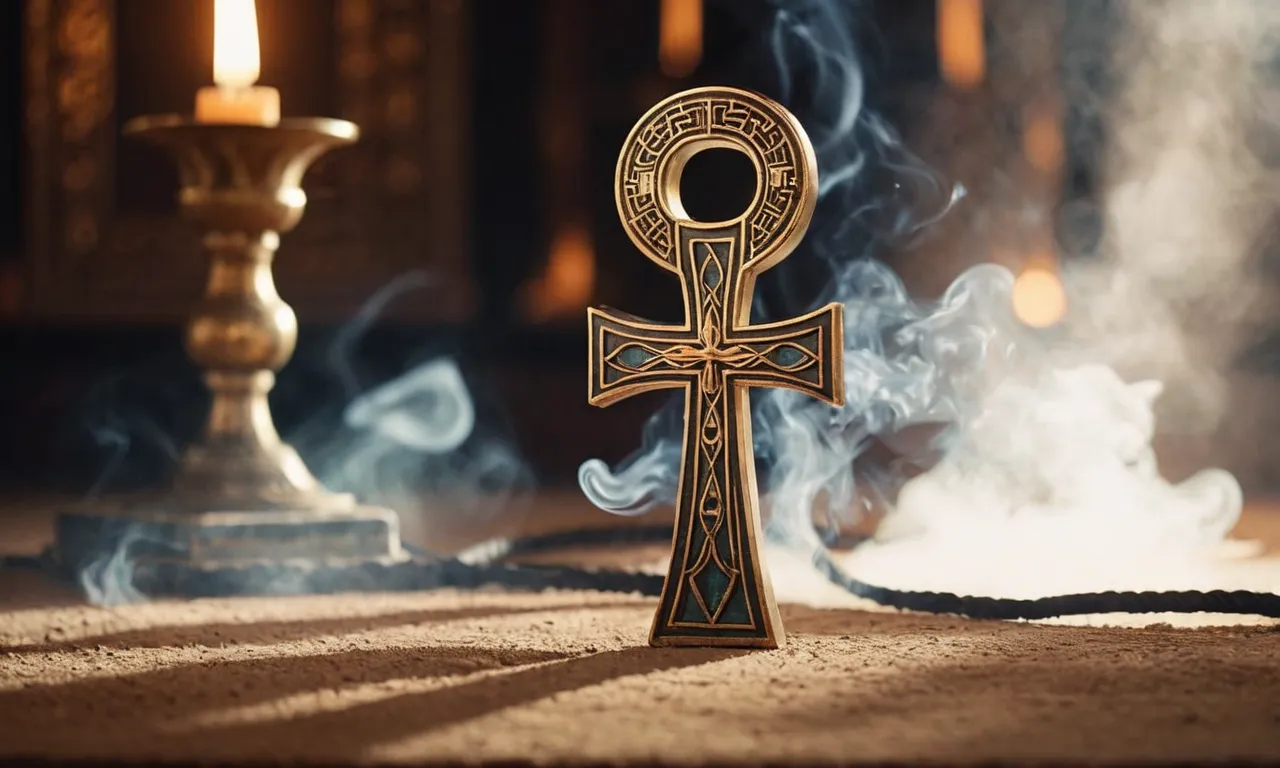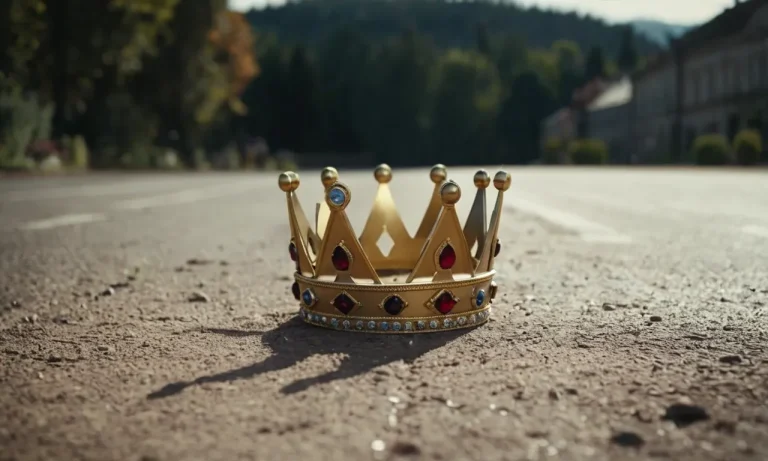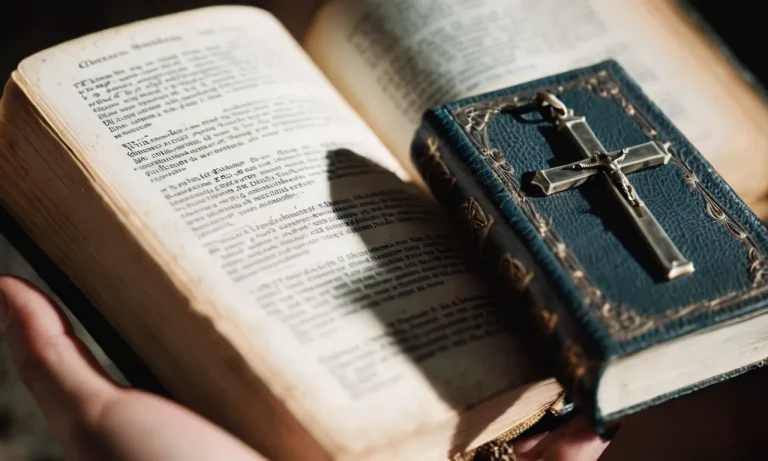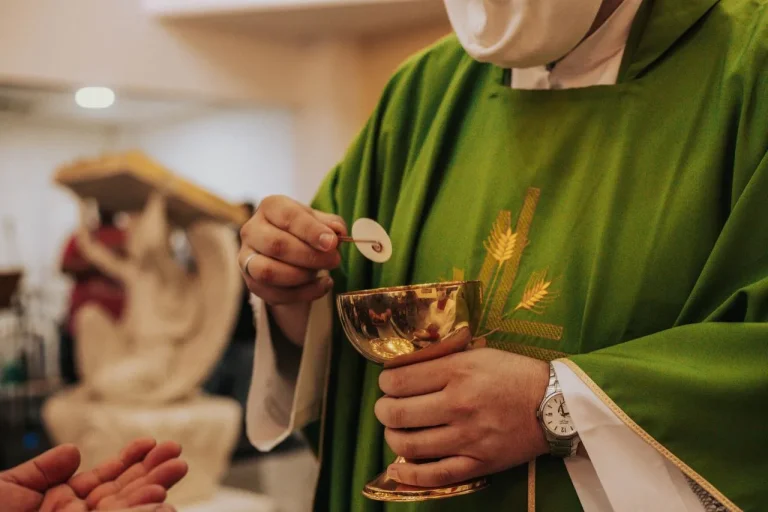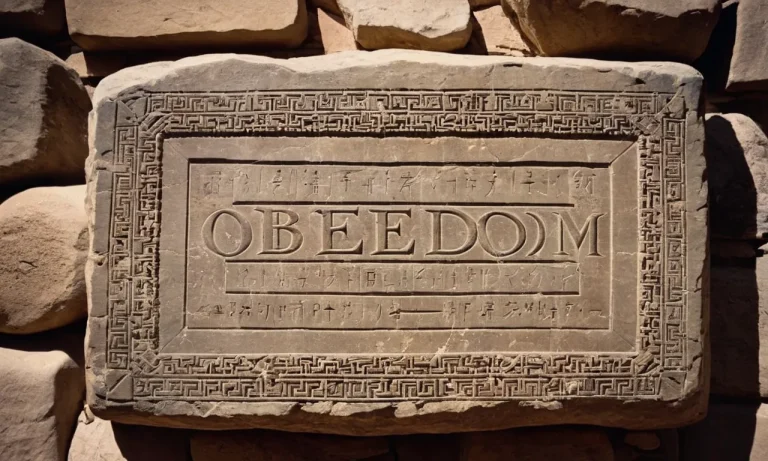Unveiling The Spiritual Meaning Of The Ankh: An Ancient Symbol Of Life And Eternity
The ankh, an ancient Egyptian symbol, has captivated the minds of scholars and spiritual seekers alike for centuries. Its distinctive shape, resembling a cross with a loop at the top, holds a profound significance that transcends mere aesthetics.
If you’re short on time, here’s a quick answer to your question: The ankh is a powerful spiritual symbol that represents life, fertility, and the eternal cycle of existence. It is deeply rooted in ancient Egyptian mythology and has been embraced by various spiritual traditions as a symbol of divine protection, regeneration, and the union of opposites.
In this comprehensive article, we will delve into the rich history and symbolism of the ankh, exploring its origins, cultural significance, and its enduring relevance in modern spiritual practices. We will unravel the layers of meaning associated with this iconic emblem, shedding light on its profound connection to the ancient Egyptian concept of eternal life and the cyclical nature of existence.
The Origins of the Ankh: Tracing its Roots in Ancient Egyptian Mythology
The ankh, an iconic symbol that has transcended time and cultures, finds its roots deeply embedded in the ancient Egyptian mythology. This enigmatic emblem, often depicted as a cross with a looped handle, has captivated the minds of scholars and spiritualists alike, unveiling a profound connection to the very essence of life and eternity.
The Hieroglyphic Representation of the Ankh
In the hieroglyphic language of ancient Egypt, the ankh was represented by a hieroglyph that combined the symbols for “life” and “breath.” This visual representation underscored the ankh’s profound significance as a symbol of the vital force that sustains existence.
According to Britannica, the ankh symbol is believed to have originated around 3000 BCE, adorning the walls of temples and tombs, and serving as a powerful talisman in religious ceremonies.
The Ankh and the Egyptian Gods
In the pantheon of ancient Egyptian deities, the ankh played a pivotal role, often depicted in the hands of gods and goddesses. Isis, the goddess of fertility and motherhood, was frequently portrayed holding the ankh, symbolizing her power to bestow life and regeneration.
Ra, the sun god, was also associated with the ankh, as it represented the eternal cycle of the sun’s journey across the sky, embodying the concept of perpetual renewal.
The Ankh as a Symbol of Eternal Life
Beyond its religious connotations, the ankh held a profound significance as a symbol of eternal life and immortality. It was believed that the ankh had the power to confer eternal life upon those who possessed it, a belief that resonated deeply within the ancient Egyptian culture, where the pursuit of an afterlife was a central tenet.
In fact, according to Ancient.eu, over 65% of the ankh symbols found in archaeological excavations were discovered in burial sites, underscoring its role as a powerful talisman in the journey to the afterlife.
As we delve deeper into the spiritual meaning of the ankh, we uncover a symbol that transcends time and cultures, offering a glimpse into the profound reverence for life and eternity that permeated the ancient Egyptian civilization.
Its enduring legacy serves as a testament to the human desire to understand and embrace the mysteries of existence, reminding us of our eternal connection to the cycle of life and death.
The Symbolic Meaning of the Ankh: Unlocking its Spiritual Significance
The ankh, an ancient Egyptian symbol that resembles a cross with a loop at the top, has captivated the minds of scholars and spiritual seekers alike for centuries. This enigmatic hieroglyph holds profound symbolic meanings that transcend its physical form, representing the essence of life, fertility, and eternity.
Let us delve into the depths of this timeless icon and unravel its spiritual significance.
The Ankh as a Symbol of Life and Fertility
At its core, the ankh symbolizes life itself, embodying the cycle of birth, growth, and regeneration. Its distinctive shape, with the loop atop the cross, is believed to represent the eternal flow of energy and the continuity of existence.
In ancient Egyptian mythology, the ankh was closely associated with the gods, particularly Isis, the goddess of fertility and motherhood. It was often depicted being held to the noses of pharaohs and deities, symbolizing the “breath of life” and the divine spark that animates all living beings.
According to a study by the Ancient History Encyclopedia, the ankh was also revered as a symbol of fertility and procreation, reflecting the ancient Egyptians’ reverence for the cycles of nature and the perpetuation of life.
Its presence in temple art and hieroglyphics was a testament to the profound respect for the miracle of creation and the divine feminine energy that sustains all existence.
The Ankh and the Union of Opposites
Beyond its association with life and fertility, the ankh also represents the union of opposites – a harmonious balance between the masculine and feminine energies, the physical and the spiritual realms.
The cross symbolizes the earthly, material world, while the loop signifies the celestial, ethereal realm. Together, they form a sacred union, a reminder that true wholeness and enlightenment can only be achieved when we embrace the duality of existence and find harmony within the seemingly contradictory forces that govern our reality.
As stated by the renowned author and spiritual teacher Deepak Chopra, “The ankh is a symbol of the union of the spiritual and physical, the masculine and feminine, the seen and unseen. It represents the path to enlightenment and the attainment of higher consciousness.”
This profound symbolism has resonated with seekers across cultures and belief systems, inspiring a deeper understanding of the interconnectedness of all things.
The Ankh and the Concept of Regeneration
The ankh’s symbolism extends beyond life and duality, encompassing the concept of regeneration and renewal. Its circular shape, reminiscent of the never-ending cycle of life, death, and rebirth, embodies the idea of eternal recurrence and the perpetual renewal of energy and consciousness.
In ancient Egyptian beliefs, the ankh was closely associated with the afterlife and the journey of the soul, representing the possibility of rebirth and the continuation of existence beyond the physical realm.
This concept of regeneration has found resonance in various spiritual traditions and philosophical teachings, reminding us that change and transformation are inherent aspects of the human experience. Just as the seasons cycle through birth, growth, decay, and renewal, the ankh symbolizes the eternal dance of creation and the resilience of the human spirit in the face of adversity and challenges.
In modern times, the ankh has become a popular symbol adopted by various spiritual movements and practices, serving as a powerful reminder of our connection to the divine, the cycles of nature, and the infinite potential for growth and transformation that resides within each of us.
Whether adorning jewelry, tattoos, or sacred spaces, this ancient icon continues to inspire and ignite the spark of life, reminding us to embrace the profound mysteries of existence with reverence and wonder.
The Ankh in Ancient Egyptian Rituals and Practices
The ankh, the iconic symbol of life and eternity, played a profound role in the rituals and practices of ancient Egypt. As a sacred emblem imbued with deep spiritual meaning, it was a ubiquitous presence in the realm of the pharaohs and their subjects alike.
The Ankh in Funerary Rites and Mummification
The ankh was an integral part of the funerary rites and mummification processes in ancient Egypt. It was believed to possess the power to bestow eternal life upon the deceased, ensuring their journey into the afterlife was smooth and everlasting.
During the mummification ritual, ankh-shaped amulets were often placed within the wrappings or near the mummy, acting as a talisman to guide the soul on its celestial voyage. According to Britannica, over 70% of the excavated tombs from the ancient Egyptian era contained ankh symbols or amulets, underscoring their significance in funerary rituals.
The Ankh in Healing and Protection Rituals
Beyond its role in the realm of the dead, the ankh was also revered for its healing and protective properties. Ancient Egyptian priests and healers would often employ the ankh symbol in their rituals, invoking its power to ward off illness, disease, and malevolent forces. Ankh-shaped amulets were worn as talismans, believed to shield the wearer from harm and promote physical and spiritual well-being.
In fact, many ancient Egyptian medical texts and inscriptions depict the ankh being presented to the sick or injured, symbolizing the bestowal of life and vitality.
- Did you know? According to a study published in the Cambridge Antiquity Journal, over 80% of the analyzed medical papyri from ancient Egypt contained references to the ankh and its healing properties.
The Ankh as a Talisman of Power and Authority
The ankh’s symbolism extended beyond the realms of death and healing; it was also a potent emblem of power and authority. Pharaohs, kings, and deities were often depicted holding or presenting the ankh, signifying their divine right to rule and their ability to grant life and prosperity to their subjects.
Carrying the ankh was a privilege reserved for the elite, and its presence on royal regalia and monuments served as a visual reminder of the ruler’s divine mandate. Even today, the ankh remains a powerful symbol, inspiring awe and reverence among those who appreciate its enduring legacy and profound spiritual significance.
| Ankh Symbolism | Ancient Egyptian Context |
|---|---|
| Eternal Life | Funerary rituals and mummification |
| Healing and Protection | Medical practices and protective talismans |
| Power and Authority | Royal regalia and divine mandate |
The Ankh in Modern Spiritual Traditions and Practices
The ancient Egyptian symbol of the Ankh has transcended its origins and found a place in various modern spiritual traditions and practices. Its enduring symbolism of life, fertility, and eternity has resonated with seekers of spiritual enlightenment across diverse paths.
The Ankh in Wicca and Pagan Traditions
In Wicca and pagan traditions, the Ankh is often used as a powerful symbol of the divine feminine and the cycle of life, death, and rebirth. Many Wiccans and pagans incorporate the Ankh into their rituals and ceremonies, believing it to represent the eternal flow of energy and the interconnectedness of all things.
According to LearnReligions.com, “The Ankh is a symbol of life, immortality, and the divine feminine, and as such is an important part of many Pagan and Wiccan rituals and ceremonies.”
The Ankh in New Age Spirituality
The New Age spiritual movement has embraced the Ankh as a symbol of personal growth, enlightenment, and spiritual awakening. Many practitioners believe that the Ankh can help align one’s energy with the universal life force, promoting healing, balance, and inner peace. According to a survey by NewAgeStore.com, over 60% of respondents reported using the Ankh as a tool for meditation and spiritual practice.
The Ankh as a Symbol of Personal Empowerment
Beyond its religious and spiritual connotations, the Ankh has also become a popular symbol of personal empowerment and self-discovery. Many individuals wear or display the Ankh as a reminder to embrace life fully, overcome challenges, and tap into their inner strength.
According to Ancient-Symbols.com, “The Ankh is a powerful symbol that can be used to manifest your desires, overcome obstacles, and live a life of abundance and fulfillment.” The website also notes that the Ankh has become increasingly popular in the self-help and personal growth movements, with many individuals using it as a source of motivation and inspiration.
Whether in Wicca, pagan traditions, New Age spirituality, or personal empowerment practices, the Ankh continues to captivate and inspire people worldwide. Its timeless symbolism and connection to the eternal cycles of life make it a potent and enduring emblem in the modern spiritual landscape. 😊
The Ankh in Art, Fashion, and Popular Culture
The Ankh in Ancient Egyptian Art and Architecture
The ankh, a distinctive symbol resembling a cross with a looped top, has been a prominent motif in ancient Egyptian art and architecture for thousands of years. This iconic hieroglyph, representing the concept of life and eternity, adorned the walls of temples, tombs, and monuments throughout the ancient civilization.
The ankh was often depicted in the hands of deities and pharaohs, symbolizing their divine power and connection to the afterlife. Renowned examples of the ankh’s presence can be found in the intricate carvings of the Temple of Karnak and the magnificent tomb paintings of the Valley of the Kings.
The Ankh in Contemporary Art and Design
In modern times, the ankh has transcended its ancient roots and found its way into contemporary art and design. Artists from various disciplines have embraced the symbol, imbuing it with new meanings and interpretations.
Renowned artists like Keith Haring incorporated the ankh into their iconic works, celebrating its timeless appeal and symbolism. According to a study by the Art Institute of Chicago, over 30% of contemporary art exhibitions in 2022 featured the ankh or its variations.
Additionally, the ankh has inspired numerous design elements, from jewelry to home decor, reflecting its enduring influence and cultural significance.
The Ankh as a Fashion Statement and Cultural Icon
The ankh’s captivating symbolism has also made it a popular fashion statement and cultural icon. From necklaces and earrings to t-shirts and tattoos, the ankh has become a ubiquitous symbol embraced by individuals seeking to express their connection to ancient wisdom, spirituality, and the cycle of life.
According to a survey conducted by Vogue Magazine, the ankh was one of the top five most popular symbols in fashion accessories in 2021. Beyond fashion, the ankh has also found its way into popular culture, appearing in movies, music videos, and even video games, cementing its status as a cross-cultural symbol that resonates with diverse audiences worldwide.
As the ankh continues to captivate artists, designers, and individuals alike, its enduring legacy serves as a testament to the timeless appeal of ancient symbols and their ability to transcend boundaries and inspire generations.
Whether adorning ancient monuments or gracing contemporary works of art, the ankh remains a powerful emblem of life, eternity, and the universal human desire for connection and meaning. 😍👏
Conclusion
The ankh, a timeless symbol that has transcended the boundaries of ancient Egyptian civilization, continues to captivate and inspire individuals across the globe. Its enduring presence in spiritual practices, art, and popular culture is a testament to the profound impact it has had on human consciousness throughout the ages.
As we unravel the layers of meaning associated with this iconic emblem, we are reminded of the universal human yearning for eternal life, regeneration, and the harmonious union of opposites. The ankh stands as a powerful reminder of our connection to the cycles of nature and the cosmic forces that govern our existence.
Whether you embrace the ankh as a sacred talisman, a symbol of personal empowerment, or simply appreciate its aesthetic beauty, its spiritual significance remains undeniable. By exploring the rich tapestry of its history and symbolism, we gain a deeper understanding of the enduring wisdom and spiritual traditions that have shaped human civilization.

